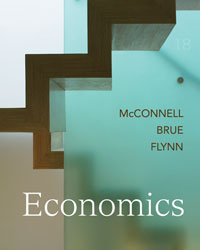
Economics (McConnell), 18th EditionChapter 17: Public Choice Theory and the Economics of TaxationKey Questions1. Explain the paradox of voting through reference to the accompanying table, which shows the ranking of three public goods by voters Jay, Dave, and Conan.  2. Suppose that there are only five people in a society and that each favors one of the five highway construction options in Table 16.2 (include no highway construction as one of the options). Explain which of these highway options will be selected using a majority paired-choice vote. Will this option be the optimal size of the project from an economic perspective? 3. How does the problem of limited and bundled choice in the public sector relate to economic efficiency? Why are public bureaucracies alleged to be less efficient than private enterprises? 4. Suppose a tax is such that an individual with an income of $10,000 pays $2,000 of tax, a person with an income of $20,000 pays $3,000 of tax, a person with an income of $30,000 pays $4,000 of tax, and so forth. What is each person's average tax rate? Is this tax regressive, proportional, or progressive? 5. What is the incidence of an excise tax when demand is highly inelastic? Highly Elastic? What effect does the elasticity of supply have on the incidence of an excise tax? What is the efficiency loss of a tax, and how does it relate to elasticity of demand and supply? |  |















